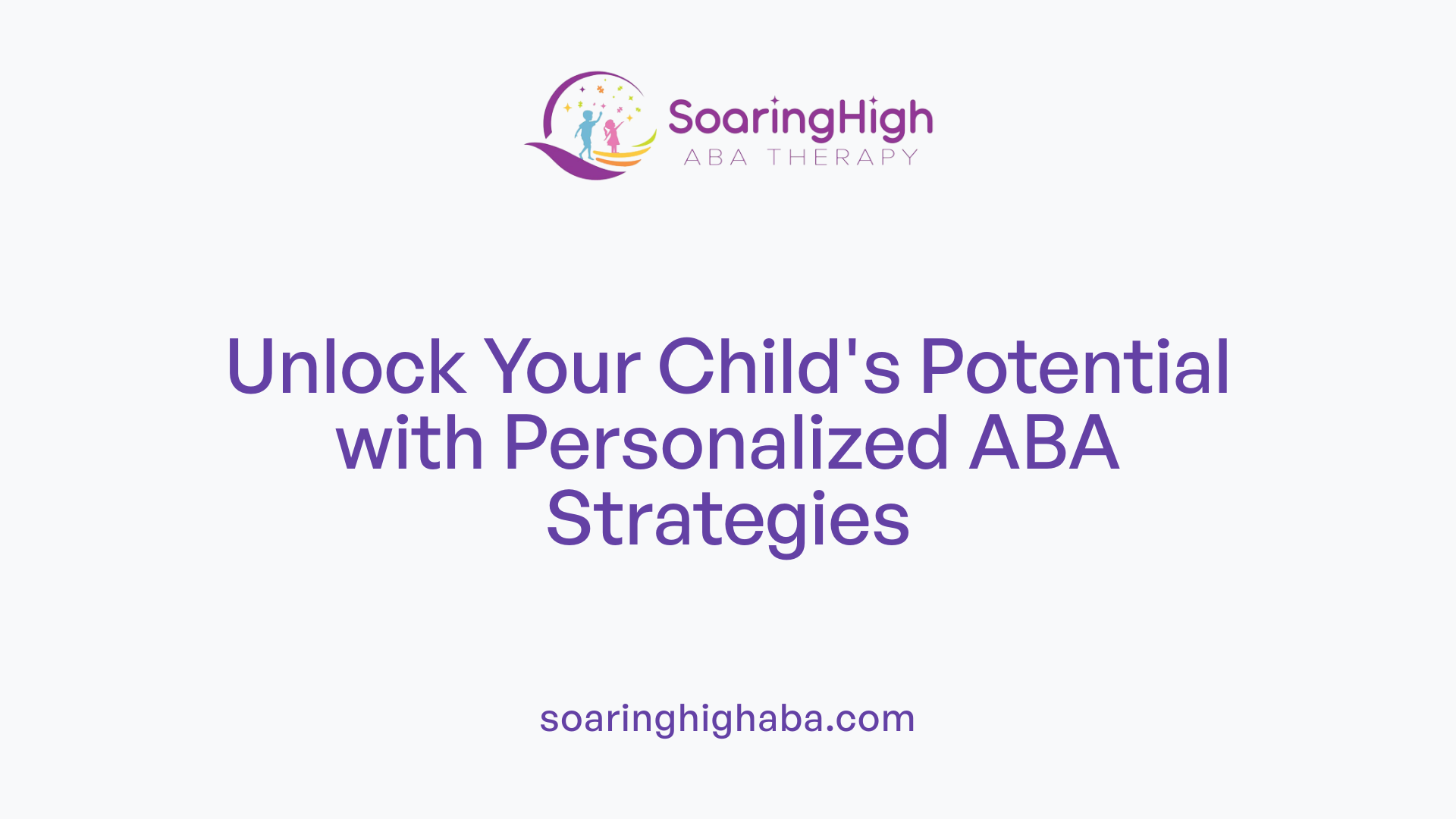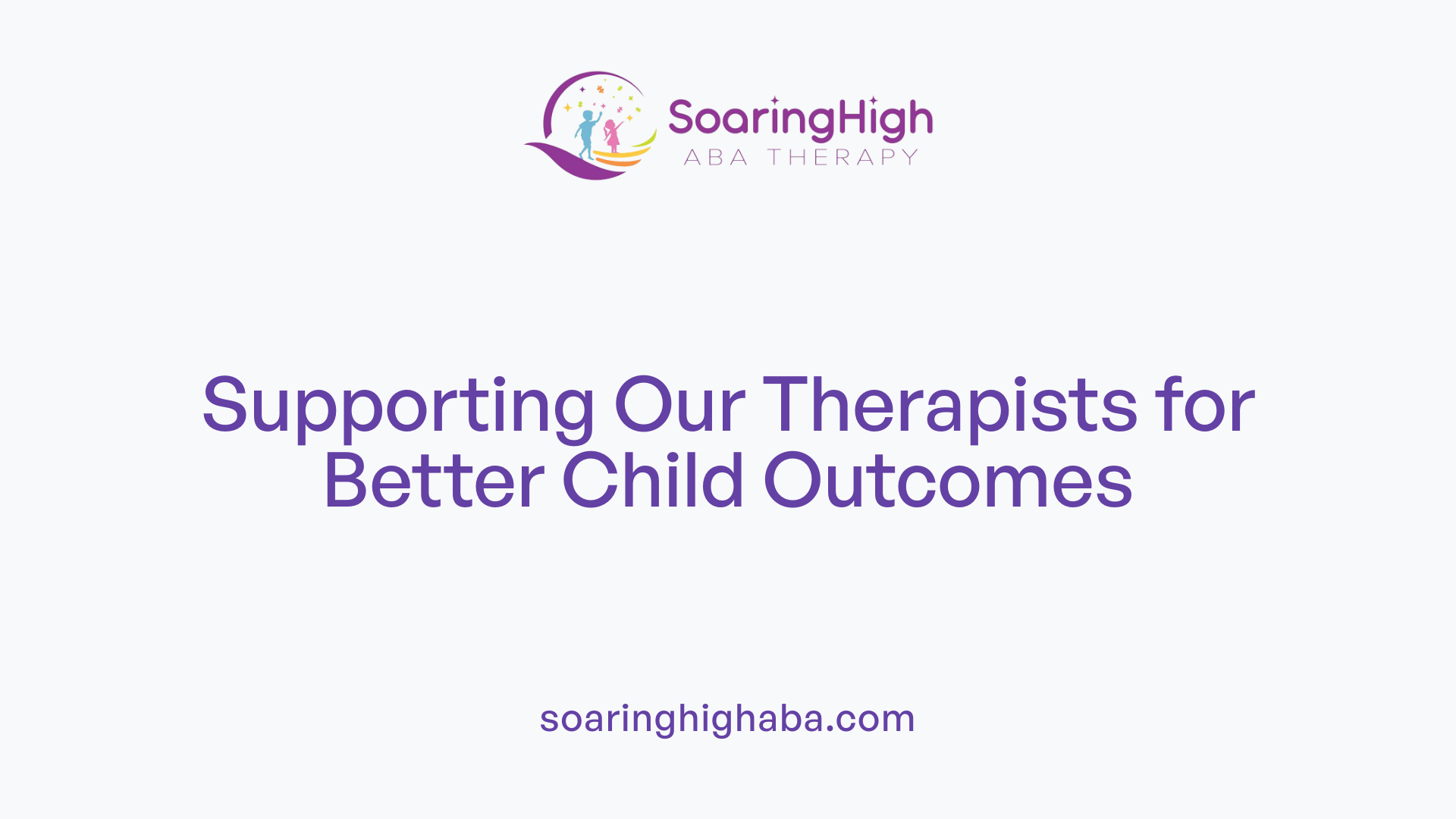Understanding How ABA Therapy Eases School Stress for Students with Autism
Children with autism often face unique challenges within the school environment, including sensory sensitivities, social difficulties, and anxiety. Applied Behavior Analysis (ABA) therapy offers targeted, individualized strategies that can significantly reduce school-related stress, empowering students to succeed academically and socially. This article explores how ABA therapy works to support autistic children in overcoming school challenges, promoting well-being and confidence.
Personalized Intervention Plans in ABA Therapy

What is the assessment process in ABA therapy?
The assessment process in Applied Behavior Analysis (ABA) therapy involves comprehensive evaluations to identify a child's strengths, challenges, and specific needs. Skilled behavior analysts conduct detailed observations and utilize tools like functional behavior assessments (FBAs), which help determine the causes and functions of certain behaviors. These assessments provide a clear understanding of the child's current abilities and difficulties, forming the foundation for creating effective intervention strategies.
How are tailored strategies developed in ABA therapy?
Based on thorough assessments, ABA therapists develop personalized plans that target individual goals. These plans include specific behavioral interventions, skill development activities, and strategies to manage sensitivities or anxieties. For example, if a child struggles with sensory overload, therapists may create sensory-friendly environments and teach coping mechanisms. The focus is on reinforcing positive behaviors and teaching new skills, such as communication, social interactions, and emotional regulation.
What role do measurable goals play?
Measurable goals are central to ABA therapy, allowing progress to be tracked objectively. Goals are clearly defined, such as improving spoken language by a certain level or reducing specific behaviors like tantrums. Data collection during therapy sessions helps therapists and families understand what strategies are effective and where adjustments are needed. This goal-oriented approach ensures that the therapy remains focused and results-driven, maximizing benefits for the child.
| Aspect | Description | Examples |
|---|---|---|
| Assessment Methods | Tools and observations used to gather information | Functional behavior assessments, parent interviews |
| Strategy Development | Custom plans created based on assessment data | Communication skill teaching, sensory management |
| Setting Goals | Defining specific, measurable objectives for progress | Increase in expressive language, decrease in self-injury |
This structured, individualized approach helps children with autism develop essential skills and manage challenges effectively, laying a strong foundation for academic and social success.
Role of ABA in Managing Sensory Inputs and Anxiety
How does ABA therapy help children with autism manage school-related stress?
ABA therapy offers personalized support that addresses the unique needs of each child, especially in stressful school environments. Through one-on-one sessions, therapists work closely with children to reduce anxiety and refine their coping skills. They start with functional behavior assessments (FBAs) to understand the specific reasons behind behaviors related to school stress. Based on these insights, targeted interventions are designed to foster positive behaviors and reduce challenging ones.
Collaboration with teachers and school staff is vital. It helps ensure that consistent strategies are implemented across settings, creating a predictable and supportive environment for children. ABA also emphasizes teaching social skills and coping mechanisms, enabling children to handle social interactions and transitions more confidently. These approaches promote independence and communication, making children better equipped to manage the everyday stressors of school life.
Overall, ABA therapy's tailored strategies help children develop resilience, reducing their overall stress and improving their ability to thrive academically and socially.
What strategies does ABA employ to alleviate school-related stress for autistic students?
To reduce school-related stress, ABA therapists adopt various strategies tailored to each child's needs. They often include direct classroom assistance to provide immediate, personalized support. Sharing these strategies with teachers ensures that children receive consistency in their behavioral support throughout their school day.
A core element is conducting FBAs, which identify why specific behaviors occur during school. With this information, therapists develop custom behavior intervention plans that address sensory sensitivities and other stressors.
Creating sensory-friendly spaces within the school is another effective approach. These spaces allow children to recharge when overwhelmed, practicing calming techniques like deep breathing or sensory modulation activities.
Teaching coping strategies helps children manage sensory overload—techniques such as using noise-canceling headphones or fidget tools to regulate sensory input. Social skills training further supports children in building collaborative peer relationships, which can lessen social anxiety.
Involving caregivers and educators in implementing these strategies ensures a consistent and reinforcing environment, ultimately helping children feel safer and more at ease in school.
| Strategy | Purpose | Implementation Details |
|---|---|---|
| Behavioral Support | Reduce challenging behaviors and promote positive ones | Use of individualized plans based on assessments |
| Sensory-Friendly Spaces | Provide calming environments to manage overload | Quiet rooms, weighted blankets, sensory tools |
| Coping Mechanisms | Teach strategies to handle sensory overload and anxiety | Deep breathing, use of noise-canceling headphones, sensory fidgets |
| Social Skills Training | Improve peer interactions and social confidence | Role-playing, social stories, structured peer interactions |
| Consistent Support & Collaboration | Ensure reliable support across settings | Regular communication among therapists, teachers, and families |
These targeted methods help create a more comfortable and supportive environment, easing school-related stress for children with autism.
Building Social Skills and Peer Relationships
How does ABA therapy help children with autism manage school-related stress?
ABA therapy plays a significant role in helping children with autism handle the stress that often comes with the school environment. This approach offers personalized, one-on-one support tailored to each child's unique needs, which can reduce anxiety and prevent challenging behaviors. Through detailed assessments known as functional behavior assessments, therapists identify specific triggers and reasons behind behaviors related to school situations. Based on these insights, they develop targeted intervention plans to address these issues.
Moreover, collaboration with teachers and school staff ensures that strategies are consistent across both home and educational settings. This consistency creates a more predictable and calm environment, which is crucial for children with autism. ABA also incorporates social skills training and effective coping mechanisms, helping children learn how to manage social interactions, transitions, and sensory inputs more effectively. As a result, children gain greater independence, better communication skills, and increased confidence, all of which contribute to reduced school-related stress and a smoother learning experience.
What are the benefits of ABA therapy in reducing stress for students with autism within educational settings?
The benefits of ABA therapy extend well beyond behavioral improvements. By fostering socially appropriate behaviors and communication abilities, ABA significantly decreases frustration and anxiety levels among students with autism. The therapy's emphasis on positive reinforcement encourages children to acquire coping strategies and essential skills that enhance their independence and social interactions.
Through careful and systematic behavior analysis, ABA helps in understanding and modifying behaviors that could cause discomfort or stress. Problematic or harmful behaviors are addressed effectively, creating a safer and more supportive environment. Most importantly, ABA programs are highly individualized, involving trained professionals working closely with each child to develop strategies suited to their specific needs.
This tailored approach results in a more predictable educational setting, reducing uncertainty that can cause stress. Children are equipped with tools to manage social situations, academic challenges, and sensory sensitivities more comfortably. As they develop these skills, their ability to navigate school environments confidently improves, leading to a natural decrease in overall stress levels.
Strategies to build social skills, reinforce positive behaviors, and reduce social anxiety
ABA therapy focuses on structured social skills training that emphasizes positive reinforcement techniques. These methods involve rewarding desired behaviors to encourage their recurrence and teaching children how to interact appropriately with peers.
Some key strategies include:
| Technique | Description | Purpose |
|---|---|---|
| Modeling | Demonstrating desired social behaviors | Helps children imitate and learn social cues |
| Role-playing | Practicing social scenarios in a safe setting | Builds confidence and prepares for real interactions |
| Reinforcement | Providing positive rewards for social attempts | Motivates children to engage socially |
| Visual supports | Using pictures and social stories | Clarifies social expectations and reduces anxiety |
| Coping skills training | Teaching relaxation and emotional regulation | Helps manage social anxiety and sensory sensitivities |
These strategies collectively promote positive social experiences and emotional safety. For children with social anxiety, ABA ensures they are gradually exposed to social situations with supportive cues, reducing fear and promoting interaction.
In summary, ABA therapy not only reduces problematic behaviors but also champions social development and stress management in school settings. By customizing interventions and fostering social success through positive reinforcement, ABA helps children with autism build meaningful peer relationships and navigate academic and social challenges more confidently.
Overview of ABA Therapy Benefits in Social Skills and Stress Management
| Benefit | Outcome | Supporting Strategy | Impact |
|---|---|---|---|
| Improved Communication | Better expressive and receptive language skills | Teaching through modeling, reinforcement | Facilitates social interactions and reduces misunderstandings |
| Reduced Challenging Behaviors | Less aggression, tantrums, and self-injury | Functional assessments and individualized plans | Creates a more positive social environment |
| Enhanced Peer Relationships | Increased social engagement and friendships | Social skills training, role-playing | Promotes peer acceptance and teamwork |
| Increased Independence | Greater self-care and daily life skills | Skill development in routines | Less reliance on adults, reduces social pressure |
| Lowered Anxiety and Stress | Greater emotional regulation and coping skills | Stress management training, coping mechanisms | Children can manage transitions and social scenarios better |
Through an array of tailored strategies, ABA therapy enables children with autism to develop essential social skills, manage their anxieties, and build meaningful social connections, thereby improving their overall quality of life in school and beyond.
Empowering Children for Independence and Success

What are the educational benefits of ABA therapy for children with autism?
ABA therapy offers significant educational advantages for children on the autism spectrum. It helps improve critical skills such as language, communication, social interaction, attention span, and memory. This approach relies on evidence-based methods, primarily positive reinforcement, visual supports, and repetitive practice to teach new skills and diminish problematic behaviors.
Each ABA program is tailored to the individual, with goals designed around the child's specific needs. Qualified professionals, including Board Certified Behavior Analysts (BCBAs), oversee these plans, ensuring they are adapted as the child progresses. Regular assessments and diligent data collection enable constant monitoring of development and allow for strategy adjustments.
As a result, children experience enhanced daily functioning, better academic performance, and overall improvements in quality of life. ABA's focus on building foundational skills encourages independence, making it easier for children to succeed in various environments, including school.
How can ABA therapy support children with autism in coping with challenges in the school environment?
ABA therapy plays a crucial role in helping children with autism navigate the complexities of the school setting. It does so by providing individualized, strategic interventions that address unique behavioral and communication challenges. Through thorough assessments like Functional Behavior Assessments (FBAs), therapists identify triggers for challenging behaviors and develop behavior intervention plans tailored to reduce these issues.
In school applications, ABA often involves one-on-one support and social skills development groups. These help children learn to communicate effectively, self-regulate their emotions, and interact more successfully with peers.
Furthermore, collaboration between ABA therapists, educators, and families ensures consistency across home and school. Strategies are shared and reinforced so children receive uniform guidance, making transitions smoother and encouraging better adaptation.
Creating structured environments where children can practice social and coping skills is essential. These settings might include sensory-friendly spaces or stress reduction techniques that directly address sensory sensitivities or anxiety, common among children with autism.
This integrated approach ensures children are not only better equipped to handle daily school challenges but also gain confidence and independence in their educational journey.
| Aspect | Description | Additional Details |
|---|---|---|
| Language & Communication | Improves verbal and non-verbal skills | Reinforcement and modeling techniques |
| Social Skills | Enhances peer interaction and collaboration | Social groups and peer play |
| Self-Regulation | Teaches coping strategies and emotional awareness | Stress management techniques |
| Challenging Behaviors | Reduces tantrums, aggression, and self-injury | Functional assessment and personalized plans |
| Academic Skills | Develops understanding of instructions and tasks | Breaking down complex skills |
| Daily Living & Independence | Fosters self-care and routine management | Life skills training |
By focusing on these areas, ABA therapy ensures a comprehensive developmental pathway for children with autism, supporting their success both inside and outside the classroom.
Collaboration and Family Involvement
How do parent and family training support ABA therapy?
Parent and family training is a cornerstone of effective ABA therapy. Therapists work closely with families to teach reinforcement strategies, behavioral techniques, and consistent routines that can be applied at home. This training helps caregivers understand their child's behavioral needs and equips them with practical tools to support skill development and behavior management.
Family members learn how to implement interventions that reinforce progress made during therapy sessions. This ongoing involvement ensures consistency across environments, which is crucial for the success of ABA programs.
What is the role of coordination between home and school?
Coordination between home and school settings is essential for maximizing the benefits of ABA therapy. Therapists often collaborate with educators, school counselors, and other professionals to ensure that intervention strategies are understood and applied consistently in the school environment.
This collaboration may involve sharing behavioral data, adjusting goals, and providing training to school staff. Such efforts create a supportive network that helps children generalize skills across different contexts, making their learning experience more seamless.
How can family stress be reduced through ABA practices?
Families can experience reduced stress by having structured support systems and clear strategies in place. ABA therapists guide families in applying techniques effectively, which minimizes uncertainty and frustration. Additionally, therapists may teach parents how to handle challenging behaviors and stressors calmly, fostering a more positive home environment.
Support groups and resources for caregivers also play vital roles, offering emotional support and practical advice. When families feel empowered and well-supported, they are better equipped to assist their child's progress and manage the daily challenges of autism.
What are the benefits of ABA therapy in reducing stress for students with autism within educational settings?
ABA therapy offers several benefits in reducing stress for students within educational environments. By promoting socially appropriate behaviors and communication skills, it helps decrease frustration and anxiety
through individualized, evidence-based interventions that reinforce positive behaviors. Students learn coping strategies and skills that foster independence and social interaction, reducing incidents of harmful or problematic behaviors.
Program collaboration ensures strategies are tailored to each child's needs, creating a predictable, supportive environment that minimizes uncertainty. This supportive structure helps students navigate social and academic activities more comfortably, decreasing their overall stress levels.
How does ABA therapy support children with autism in coping with challenges in the school environment?
ABA therapy supports children by providing tailored interventions that address specific behavioral and communication challenges. It involves conducting assessments to identify triggers of problematic behaviors and developing strategies to address them.
In school, this might include one-on-one support, social skills training, and consultation with educators to apply consistent behavioral strategies. Creating a structured therapeutic environment allows children to practice new skills, such as self-regulation and peer interaction.
Coordination with families ensures that behavior management is coherent across settings, promoting smoother transitions and better adaptation to school routines. These combined efforts enable children with autism to cope more effectively with the demands of the school environment, reducing stress and increasing success.
Supporting Families and Therapists

What support options and resources are available for families of children with autism receiving ABA therapy?
Families and caregivers are integral to the success of ABA therapy. They are encouraged to engage in guidance and training programs that empower them to reinforce learned skills and manage behaviors consistently across different settings. These family training sessions often include teaching reinforcement techniques, behavior management strategies, and ways to support their child's progress at home and in school environments.
Additionally, support networks such as parent groups and counseling services provide emotional backing, helping families cope with the stresses associated with caring for a child with autism. Sharing experiences within these groups can offer comfort and practical advice, reducing feelings of isolation.
For clinicians and therapists, safeguarding their well-being is equally important. Resources like relaxation techniques, peer supervision, and ongoing professional development can help manage emotional exhaustion and complex behaviors encountered during therapy sessions.
Creating a supportive work environment is essential for therapists, emphasizing good time management, access to necessary tools, and a culture that fosters open communication and teamwork. Such environments help therapists sustain their performance and prevent burnout, ultimately improving therapy outcomes for children.
How can creating a supportive environment for therapists and families enhance the effectiveness of ABA therapy?
A nurturing environment for both families and therapists enhances trust, communication, and consistency—factors that are vital for making positive, sustained changes in a child's behavior. When families are equipped with proper training and emotional support, they are more confident and effective in implementing strategies at home.
Therapist well-being directly impacts client progress; a therapist who feels supported and mentally healthy is better able to deliver consistent, high-quality intervention. This includes managing their workload, practicing stress reduction techniques, and engaging in continued learning.
Table: Support Strategies for Families and Therapists in ABA Therapy
| Support Area | Examples | Benefits |
|---|---|---|
| Family Support | Parent training programs, counseling, support groups | Improves caregiving consistency, reduces parental stress |
| Therapist Support | Relaxation exercises, peer supervision, professional development | Prevents burnout, enhances therapy quality |
| Work Environment | Good time management, access to resources, teamwork culture | Increases therapist satisfaction, therapy success |
Ultimately, fostering a supportive environment for everyone involved promotes better engagement, reduces stress, and maximizes the positive impact of ABA therapy on children’s development.
Addressing Stress in ABA Practitioners for Better Outcomes

What stressors do ABA practitioners face, and how can they be mitigated?
ABA practitioners, including behavior analysts and therapists, often encounter various stressors that can impact their effectiveness and well-being. Common challenges include managing high caseloads, emotional fatigue from working with children who have complex behavioral needs, and physical exhaustion from demanding schedules.
These stressors can negatively influence therapy outcomes by reducing therapist focus, decreasing patience, and potentially leading to burnout. High stress levels can impair a therapist's ability to deliver consistent and high-quality interventions, which are crucial for the child's progress.
To mitigate these issues, several strategies can be employed. Incorporating relaxation techniques such as mindfulness, deep breathing exercises, and brief physical activity can help therapists manage immediate stress responses. Establishing robust support networks among colleagues and families provides emotional backing and practical advice.
Creating a supportive work environment that acknowledges the challenges faced by practitioners is also vital. Good time management, the use of organizational tools, and setting realistic expectations help reduce workload pressures. Ongoing professional development and access to peer supervision ensure therapists can seek guidance, share experiences, and refine their skills.
Providing access to mental health resources and ensuring reasonable caseloads are fundamental. These measures help prevent burnout, maintain high standards of care, and ultimately lead to more effective therapy sessions. When practitioners are supported and less overwhelmed, children benefit from more consistent, engaged, and compassionate interventions.
The Role of Data and Evidence inABA Effectiveness

How does regular assessment and progress monitoring contribute to ABA therapy?
Regular assessments and progress tracking are fundamental components of effective ABA therapy. These evaluations help therapists understand each child's unique strengths and challenges, enabling them to tailor interventions precisely. By systematically collecting data on behaviors, skill acquisition, and response to interventions, clinicians can measure progress over time and identify areas needing adjustment.
For example, therapists record how a child responds to specific reinforcement strategies or how well they communicate before and after interventions. This ongoing documentation provides an objective basis for decision-making, ensuring that therapy remains relevant and effective.
Why are data-driven adjustments crucial?
Adjusting therapy based on data ensures that interventions continue to meet the evolving needs of the child. If a particular strategy isn’t producing expected results, therapists can analyze data to determine why and modify the plan accordingly. This adaptive approach maximizes skill acquisition, minimizes frustration, and avoids wasting time on ineffective methods.
For instance, if data shows a child struggles with a specific social skill, the therapist might introduce new reinforcement techniques or break down the skill into simpler steps. Continuous adjustments foster a more personalized and successful intervention process.
How do research-backed strategies support ABA therapy?
The foundation of ABA lies in evidence-based practices that are supported by decades of scientific research. These strategies rely on proven principles such as positive reinforcement, functional behavior assessment, and task analysis. Using research-backed methods enhances the likelihood of achieving meaningful behavioral improvements.
Incorporating validated strategies also provides consistency and credibility, which is vital for gaining support from families, schools, and funding bodies. As new research emerges, ABA practitioners update their approaches, ensuring that they provide the most effective interventions grounded in the latest evidence.
In summary, the integration of regular assessments, data-driven modifications, and research-supported strategies ensures ABA therapy remains effective, personalized, and scientifically validated.
| Aspect | Role in Effectiveness | Additional Details |
|---|---|---|
| Regular assessments | Tracks progress and identifies needs | Ongoing, systematic evaluation |
| Data-driven adjustments | Tailors interventions to child’s response | Modifies strategies based on collected data |
| Research-backed strategies | Ensures interventions are grounded in scientific evidence | Uses proven methods like reinforcement and task analysis |
By combining these elements, ABA therapy continues to be a robust and responsive intervention for children with autism. It not only addresses behavioral challenges but also promotes meaningful skill development, empowering children toward greater independence and social integration.
The Transformative Impact of ABA in School Settings
ABA therapy continues to demonstrate its vital role in creating supportive, adaptive, and inclusive school environments for children with autism. By addressing sensory sensitivities, enhancing social and communication skills, and fostering independence, ABA reduces key sources of stress, ensuring that autistic students can thrive academically and socially. Collaboration among families, educators, and behavior analysts is crucial to these positive outcomes, emphasizing a comprehensive approach that reinforces consistency and builds confidence. As research and practices evolve, ABA remains a cornerstone in helping children with autism navigate their school lives with less stress and greater success.
References
- 7 Practical Ways To Manage Back-to-School Stress In Children On ...
- Exploring How Stressful Is ABA Therapy: What to Expect
- 7 Surprising Benefits of ABA Therapy for Kids You Need to Know
- ABA Therapy vs School: Making the Right Choice For Your Child
- ABA Therapy in Schools: School-Based ABA Services
- ABA Services: Autism Therapy Services for Children
- Applied Behavior Analysis (ABA) | Autism Speaks
- Applied Behavioral Analysis (ABA) - Autism Speaks
- ABA and other therapies | Autism Speaks





































































































